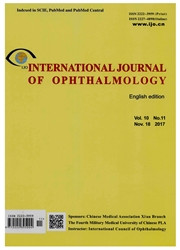

 中文摘要:
中文摘要:
为明确菠萝(Ananas comosus)叶褐斑病的病原菌及其生物学特性,采用组织分离法、形态特征观察、致病性测定和r DNA-ITS序列分析对病原菌进行鉴定.通过测定病原菌在不同条件下菌丝生长和孢子产生的情况,对病菌的生物学特性进行了研究.结果表明:菠萝叶褐斑病的病原菌为链格孢(Alternaria alternata(Fr.)Keissler).燕麦琼脂和查氏琼脂培养基适宜病原菌菌丝的生长和产孢;麦芽糖、山梨醇,葡萄糖和蔗糖有利于菌丝生长,肌醇、木糖和麦芽糖有利于孢子产生.蛋白胨有利于菌丝生长,硝酸钾和牛肉膏有利于病原菌产孢;病原菌生长温度范围为5-34℃,最适生长温度为26℃;最适生长p H为7-8;光照可促进孢子的产生.
 英文摘要:
英文摘要:
To clarify the pathogen of leaf brown spot on pineapple (Ananas comosus) and its biological characteristics, the pathogen was identified by tissue isolation, morphological characters, pathogenicity test and rDNA-ITS sequence analysis. Biological characteristics were tested by measuring mycelia growth and spore production under different conditions. The result showed that the disease was caused by Alter- naria alternata (Fr.) Keissler. Oat agar medium and Czapek medium were best for the mycelia growth and spore production of the pothogen. Maltose, sorbitol, glucose and Saccharose were the best carbon sources for mycelia growth while inositol, xylose and glucose were best for spore production. Peptone was the best nitrogen source for mycelia growth while KN03 and glucose were best for spore production. The pathogen could grow under 5 - 34 ℃, and the optimum temperature was 26 ℃. The optimum pH value was 7 - 8. Light can promote spore production.
 同期刊论文项目
同期刊论文项目
 同项目期刊论文
同项目期刊论文
 期刊信息
期刊信息
